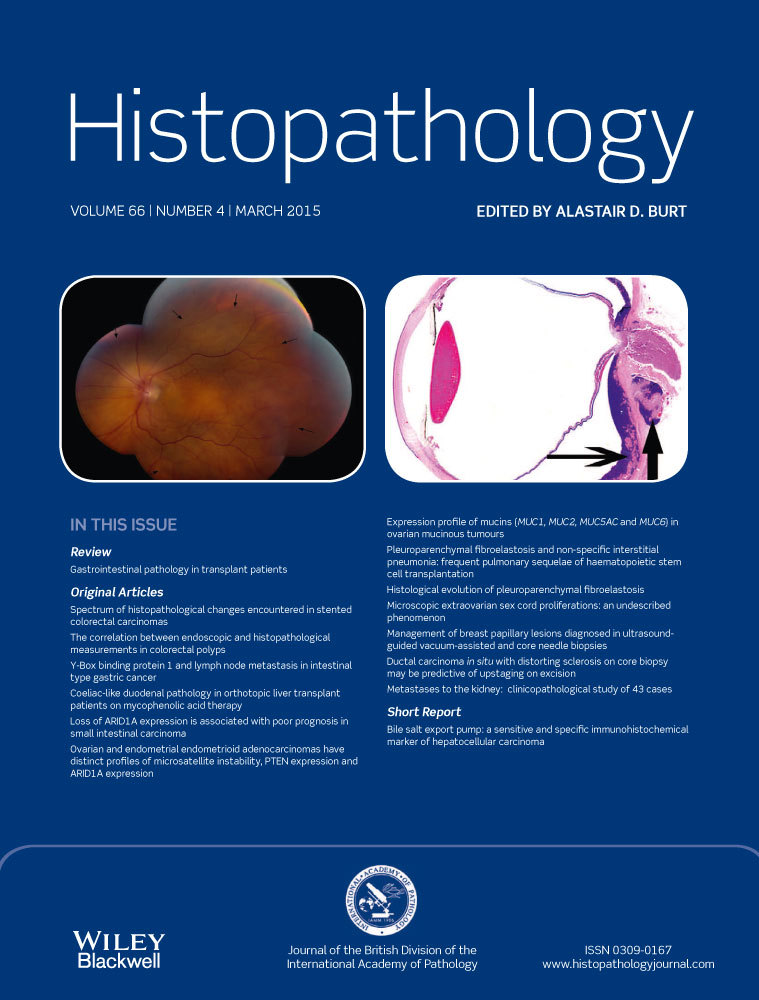The correlation between endoscopic and histopathological measurements in colorectal polyps
Abstract
Aims
Colorectal adenomas measuring 10 mm or more are at increased neoplastic risk and therefore undergo more rigorous follow-up. Currently there is no standardized method of assessing polyp size. We aimed to examine the correlation between endoscopic and histopathological measurements to determine the most appropriate method for clinical use.
Methods and results
Colorectal polyps removed between November 2008 and January 2009 were identified. Routine endoscopic and histopathological measurements were determined retrospectively from the reports. Glass slide measurements using a ruler and magnified graticule were performed prospectively on all cases. Fifty cases also underwent high-resolution digital scanning and tissue morphometry. After exclusions, 352 polyps from 210 patients were identified, including 235 adenomas, 107 hyperplastic polyps and 10 other lesions. Only 89% of adenomas had a documented endoscopic measurement and 22% a histopathological measurement. The median endoscopic measurement was significantly greater, resulting in 13% of patients being misclassified as high or low risk.
Conclusions
There are significant differences between endoscopic and histopathological measurement, and currently histopathologists frequently fail to accurately measure adenomas. Histopathological measurement should still be considered as the gold standard; however, there must be a hierarchy of measurements to take account of the practical limitations of sample fragmentation.




